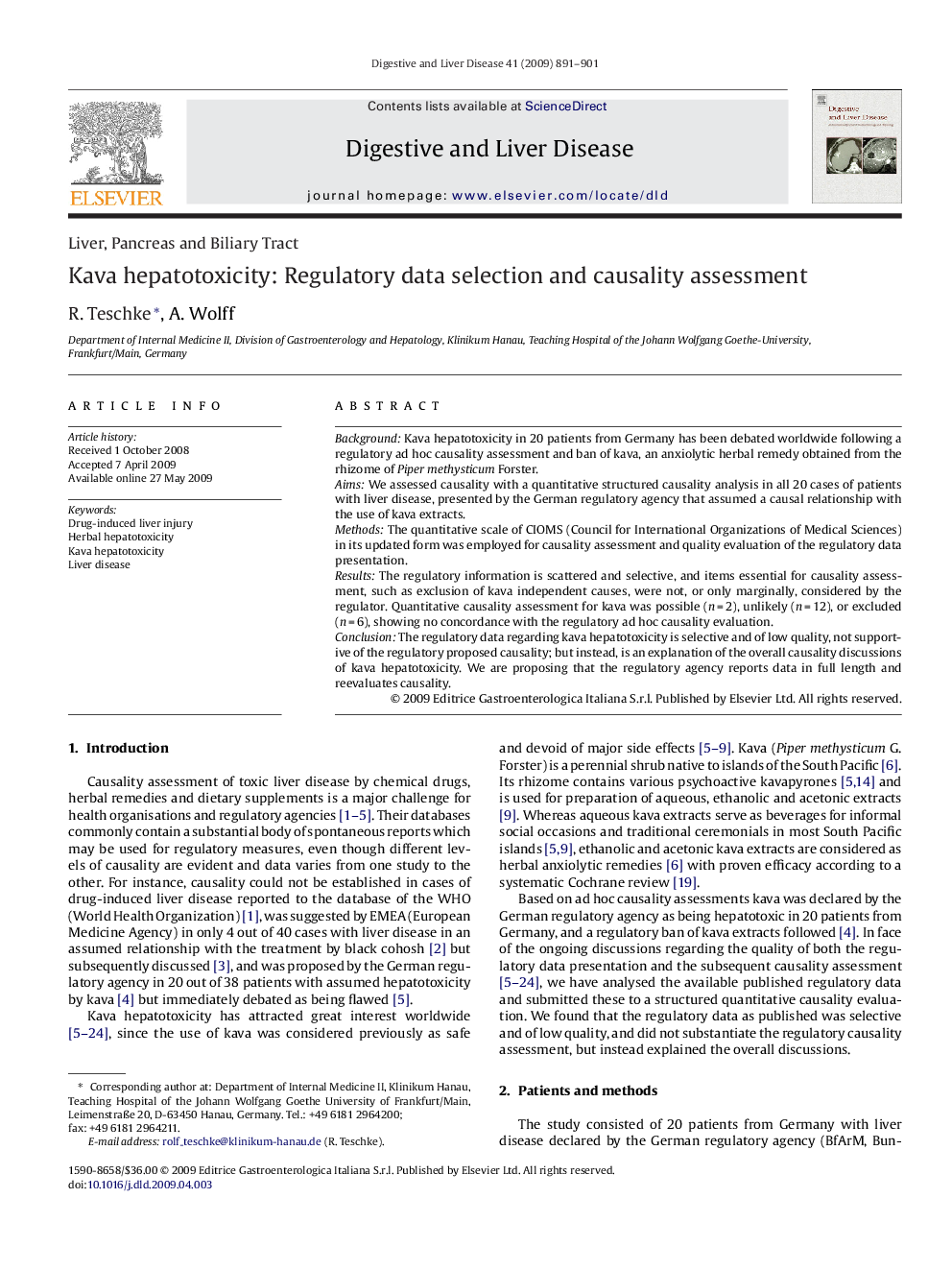| Article ID | Journal | Published Year | Pages | File Type |
|---|---|---|---|---|
| 3264210 | Digestive and Liver Disease | 2009 | 11 Pages |
BackgroundKava hepatotoxicity in 20 patients from Germany has been debated worldwide following a regulatory ad hoc causality assessment and ban of kava, an anxiolytic herbal remedy obtained from the rhizome of Piper methysticum Forster.AimsWe assessed causality with a quantitative structured causality analysis in all 20 cases of patients with liver disease, presented by the German regulatory agency that assumed a causal relationship with the use of kava extracts.MethodsThe quantitative scale of CIOMS (Council for International Organizations of Medical Sciences) in its updated form was employed for causality assessment and quality evaluation of the regulatory data presentation.ResultsThe regulatory information is scattered and selective, and items essential for causality assessment, such as exclusion of kava independent causes, were not, or only marginally, considered by the regulator. Quantitative causality assessment for kava was possible (n = 2), unlikely (n = 12), or excluded (n = 6), showing no concordance with the regulatory ad hoc causality evaluation.ConclusionThe regulatory data regarding kava hepatotoxicity is selective and of low quality, not supportive of the regulatory proposed causality; but instead, is an explanation of the overall causality discussions of kava hepatotoxicity. We are proposing that the regulatory agency reports data in full length and reevaluates causality.
